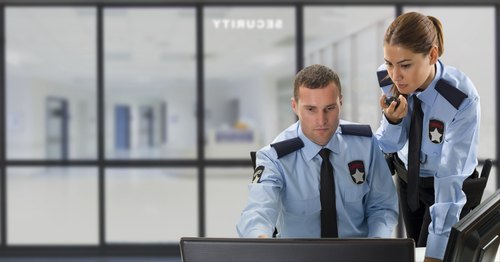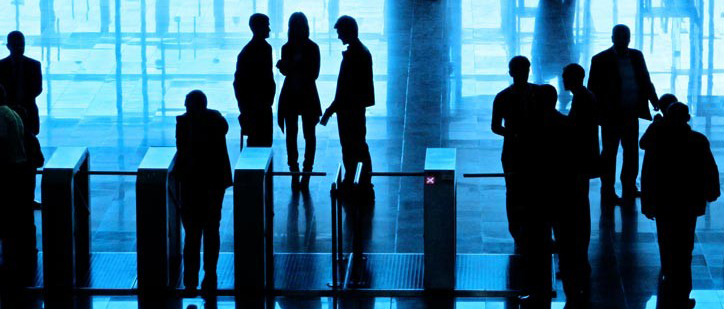Securing Success: A Deep Dive into Corporate Security Strategies
Securing Success: A Deep Dive into Corporate Security Strategies
Blog Article
From Cybersecurity to Physical Procedures: Strengthening Company Safety in an Altering World
In today's swiftly developing digital landscape, the significance of company safety and security can not be overemphasized. As cyber dangers end up being significantly advanced and widespread, organizations need to exceed traditional cybersecurity procedures to safeguard their procedures and possessions - corporate security. This is where the assimilation of physical safety procedures ends up being essential. By incorporating the strengths of both cybersecurity and physical security, business can develop a comprehensive defense method that deals with the varied array of risks they deal with. In this conversation, we will certainly explore the changing risk landscape, the demand to integrate cybersecurity and physical safety and security, the application of multi-factor verification steps, the value of worker recognition and training, and the adjustment of security measures for remote workforces. By taking a look at these essential locations, we will certainly obtain beneficial understandings into how organizations can strengthen their corporate safety in an ever-changing globe.
Understanding the Altering Danger Landscape
The developing nature of the modern globe requires an extensive understanding of the transforming danger landscape for efficient corporate protection. In today's interconnected and electronic age, hazards to company safety and security have actually ended up being more complex and advanced. As technology developments and services become increasingly reliant on electronic framework, the capacity for cyberattacks, information breaches, and various other safety breaches has actually significantly boosted. It is vital for organizations to remain educated and adjust their security determines to resolve these progressing hazards.
One trick aspect of understanding the altering hazard landscape is acknowledging the various sorts of threats that organizations encounter. Cybercriminals are constantly developing new methods to manipulate susceptabilities in computer system systems and networks. These threats can vary from malware and ransomware attacks to phishing scams and social engineering tactics. Additionally, physical dangers such as burglary, criminal damage, and business espionage continue to be widespread problems for businesses.
Tracking and evaluating the hazard landscape is crucial in order to recognize possible dangers and susceptabilities. This includes staying updated on the most recent cybersecurity fads, assessing hazard intelligence reports, and performing routine danger assessments. By recognizing the changing threat landscape, companies can proactively carry out suitable security steps to alleviate dangers and protect their properties, online reputation, and stakeholders.
Integrating Cybersecurity and Physical Safety
Integrating cybersecurity and physical protection is important for detailed corporate security in today's interconnected and digital landscape. As organizations significantly count on modern technology and interconnected systems, the boundaries in between physical and cyber dangers are becoming obscured. To properly secure against these dangers, an all natural method that integrates both cybersecurity and physical safety and security actions is vital.
Cybersecurity concentrates on protecting digital properties, such as systems, networks, and information, from unauthorized access, interruption, and burglary. Physical safety, on the other hand, includes procedures to safeguard physical possessions, individuals, and facilities from dangers and susceptabilities. By integrating these 2 domain names, organizations can resolve vulnerabilities and risks from both digital and physical angles, thereby improving their general protection posture.
The combination of these 2 techniques permits a more detailed understanding of security risks and enables a unified reaction to cases. Physical accessibility controls can be boosted by incorporating them with cybersecurity methods, such as two-factor verification or biometric recognition. Likewise, cybersecurity steps can be complemented by physical safety measures, such as surveillance cams, alarm systems, and safe and secure accessibility factors.

Applying Multi-Factor Authentication Steps
As organizations progressively focus on extensive safety measures, one efficient strategy is the implementation of multi-factor authentication measures. Multi-factor verification (MFA) is a safety and security technique that calls for customers to provide several kinds of identification have a peek here to access a system or application. This method adds an extra layer of protection by integrating something the individual recognizes, such as a password, with something they have, like a safety or a finger print token.
By applying MFA, companies can considerably improve their protection stance - corporate security. Traditional password-based authentication has its restrictions, as passwords can be quickly jeopardized or failed to remember. MFA reduces these threats by including an extra verification aspect, making it harder for unapproved people to access to delicate information
There are several sorts of multi-factor authentication techniques offered, consisting of biometric authentication, SMS-based confirmation codes, and equipment tokens. Organizations require to assess their particular requirements and choose one of the most ideal MFA remedy for their requirements.
Nevertheless, the execution of MFA ought to be meticulously prepared and executed. It is important to strike an equilibrium in between protection and use to stop customer frustration and resistance. Organizations needs to likewise consider potential compatibility concerns and supply sufficient training and assistance to make certain a smooth shift.
Enhancing Staff Member Understanding and Training
To strengthen company security, organizations have to focus on enhancing employee recognition and training. In today's quickly evolving hazard landscape, workers play a try this crucial duty in protecting a company's sensitive details and possessions. Numerous safety and security violations occur due to human mistake or absence of understanding. Therefore, companies require to buy extensive training programs to enlighten their employees regarding possible risks and the very best methods for minimizing them.
Reliable staff member awareness and training programs must cover a wide variety of subjects, consisting of data security, phishing assaults, social design, password health, and physical security steps. These programs should be tailored to the particular needs and responsibilities of different worker functions within the organization. Routine training simulations, workshops, and sessions can help employees develop the required abilities and understanding to respond and identify to protection dangers successfully.
In addition, companies must encourage a society of safety understanding and offer recurring updates and tips to keep staff members notified about the most recent threats and reduction methods. This can be done with inner communication networks, such as e-newsletters, intranet websites, and email campaigns. By promoting a security-conscious workforce, organizations can significantly lower the possibility of security events and shield their useful assets from unapproved accessibility or compromise.

Adapting Security Steps for Remote Labor Force
Adjusting company security steps to fit a remote workforce is vital in making certain the protection of sensitive information and assets (corporate security). With the increasing trend of remote work, organizations should execute suitable safety procedures to alleviate the dangers connected with this new method of functioning
One vital element of adapting safety procedures for remote job is developing protected communication channels. Encrypted messaging platforms and virtual private networks (VPNs) can aid protect delicate details and avoid unauthorized gain access to. Furthermore, organizations ought to impose using solid passwords and multi-factor verification to improve the safety of remote access.
Another vital consideration is the application of secure remote accessibility options. This includes offering staff members with safe access to company resources and information with digital desktop framework (VDI), remote desktop computer protocols (RDP), or cloud-based services. These modern technologies make sure that delicate info continues to be secured while enabling employees to do their duties effectively.

Last but not least, comprehensive safety and security understanding training is directory critical for remote employees. Training sessions ought to cover finest techniques for firmly accessing and taking care of delicate info, identifying and reporting phishing attempts, and maintaining the general cybersecurity health.
Conclusion
Finally, as the threat landscape continues to develop, it is essential for companies to enhance their protection gauges both in the cyber and physical domains. Integrating cybersecurity and physical security, implementing multi-factor authentication measures, and enhancing employee awareness and training are essential actions in the direction of attaining durable company safety. Furthermore, adapting security measures to suit remote labor forces is critical in today's transforming world. By carrying out these measures, companies can alleviate dangers and protect their beneficial properties from possible dangers.
In this conversation, we will discover the changing risk landscape, the requirement to incorporate cybersecurity and physical security, the application of multi-factor verification measures, the relevance of worker recognition and training, and the adaptation of protection measures for remote labor forces. Cybersecurity steps can be enhanced by physical security steps, such as security cams, alarms, and safe and secure access points.
As companies increasingly prioritize comprehensive safety and security procedures, one reliable method is the application of multi-factor verification steps.In final thought, as the hazard landscape continues to develop, it is critical for companies to enhance their safety gauges both in the cyber and physical domains. Integrating cybersecurity and physical safety, implementing multi-factor authentication steps, and improving worker awareness and training are necessary actions in the direction of achieving robust company security.
Report this page